Introduction

KwaZulu Natal, the subtropical eastern province of South Africa, is home to 1.3 million people of Indian descent. The modern Indian population in South Africa are descendants of workers who have traveled to South Africa to get a job. In the 1830s, colonial plantations in Port Natal (KwaZulu Natal) commissioned Indian workers to replace the slave labor force. In total, the British Empire transported about 200,000 Indian workers indenturely to the shores of Port Natal to provide manual labor. However, this foreign presence threatened colonial rule, which resulted in years of racial oppression. The establishment of the apartheid regime exacerbated the situation for all non-white citizens residing in South Africa. Indian society made significant contributions to the struggle for freedom in South Africa. To fully understand the influence of the Indian diaspora and culture, we must examine the source of Indian migration and its effects.
The birth of introduced Indian labor
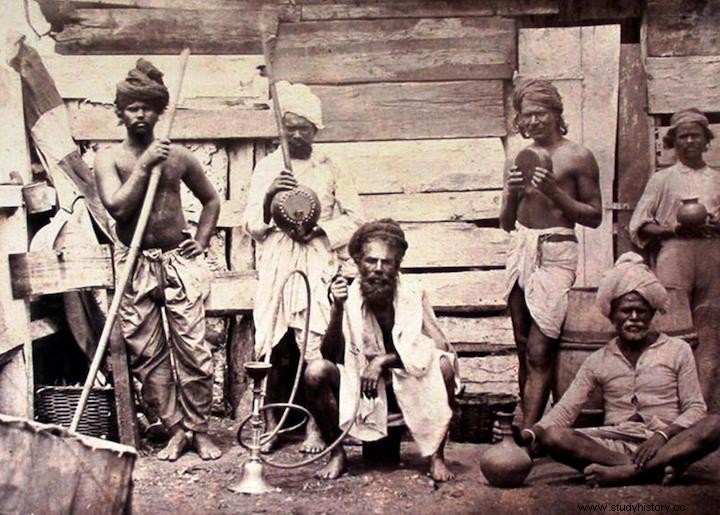
Industrialized labor was a system of forced labor in which a person (an indentation) agreed to provide labor in a foreign country for minimal compensation. In 1833, the British Empire abolished slavery and removed its colonial plantations from their primary labor force - slaves. Therefore, the British Empire introduced labor to meet the growing demand for cheap labor. Labor gave colonial plantations voluntary labor to replace the freed slaves.
The implementation of required labor requirements requires a large, willing and unemployed population. Therefore, India - 'the jewel in the crown' - came into focus. India's exponential population growth, widespread poverty and severe unemployment provided the ideal candidates for labor. Indentured Indian workers signed a contract with contract (known as a ' girmit' ) to work in a foreign country for a maximum of five years. Under the agreement, colonial employers agreed to pay Indian workers a minimum wage and provide daily rations. However, the contract still approved the sale, purchase and trade of employers who were in the workplace on contract by their employers without prior approval.
In 1834, the British Empire sent the first cargo of Indian workers to Mauritius. On the colonial plantations of Mauritius, the new labor system successfully replaced successful slave labor, proving that free labor is better than slavery. After that, the British Empire transported the workers from indentations from India to tropical and subtropical colonial worlds (such as Trinidad, St. Lucia and Granada).
Port Natal's sugar cane industry

The warm Indian Ocean borders the subtropical eastern province of Port Natal, the busiest port in South Africa. In 1856, the British Empire declared Port Natal a crown colony, with the British monarchy retaining all authority over the provincial legislature and administration. Port Natal, however, was undeveloped, and the settlement was desperate to establish a profitable industry. The colonial peasants experimented with tea, coffee and willow root crops to ensure a productive agricultural sector. The subtropical eastern climate of Port Natal made the soil ideal for growing sugar cane. In 1851, Edmund Morewood, a colonial farmer, cultivated the first commercial sugar cane on South African soil. Thereafter, the demand for affordable labor on Natal's sugar cane plantations increased. However, Port Natal's local black population was accustomed to a warrior's lifestyle, and the colonial peasants considered the locals 'financially self-sufficient' to work for wages.
Given the success of labor in Mauritius and Trinidad, in 1859, colonial farmers in Port Natal lobbied to transport indentured Indian workers to South Africa. The British, Indian and South African authorities have adopted complementary laws to enable the immigration of workers (known as' human cargo ') from India to South Africa.
The recruitment of indentured Indian workers
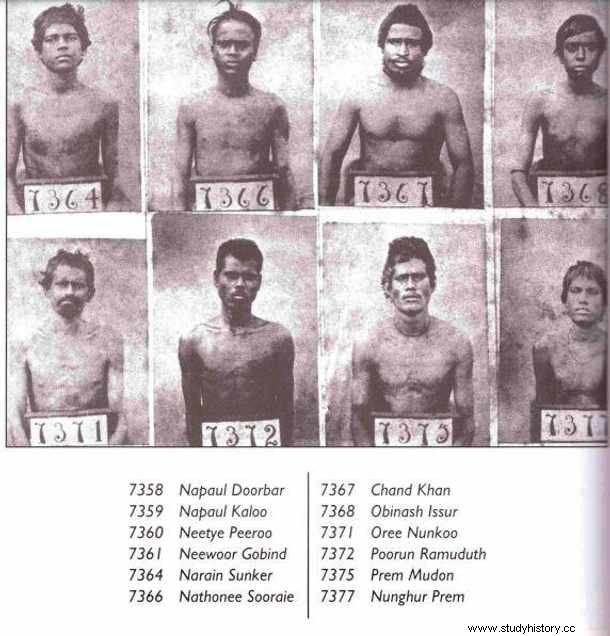
The recruitment of Indian citizens for labor on Natal's sugar cane plantations was no easy task. In Hinduism, breaking the sea into a foreign land was a violation of the caste system, and not many Indian workers were willing to sacrifice their social respect. Therefore, many Indian recruiters ('arkatis') chose to use deceptive measures to recruit ' volunteers' employer for the colonial plantations.
India's widespread poverty and famine made Indian citizens in rural areas more vulnerable to the exploitation of arkatis and local authorities. Recruiters targeted illiterates or those who did not know English. Big stories of local employment, high wages and Port Natal's affluent economy tricked many Indian citizens into signing contracts.
The journey to South Africa
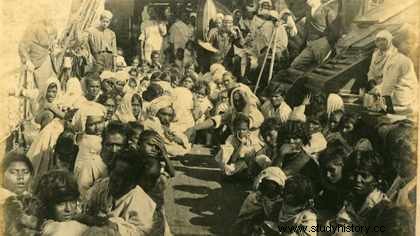
In October 1860, 342 Indian workers boarded the SS Turo in Madras, and the SS Belvedere accompanied 310 passengers from Calcutta. Unlike the wind-powered slave ships, the new steam-powered vessels accelerated the transportation of workers incurred to colonial farms. However, the sea voyage from India to Port Natal was difficult, and many passengers did not survive the voyage.
Although the travel conditions were better than the slave transport conditions, shared living quarters still spread diseases, such as cholera and dysentery, among the travelers. Death and disease were widespread on these vessels. However, accurate records of births and deaths that occurred on board are not available. On 16 and 26 November 1860, SS Turo and SS Belvedere docked at the port of Port Natal, respectively. Written reports show that the existing South African population, black and white, showed hostility towards the new migrants upon their arrival. The derogatory phrase ' cool' was created to refer to indentured Indian workers.
Conditions for Indentured Indian Work
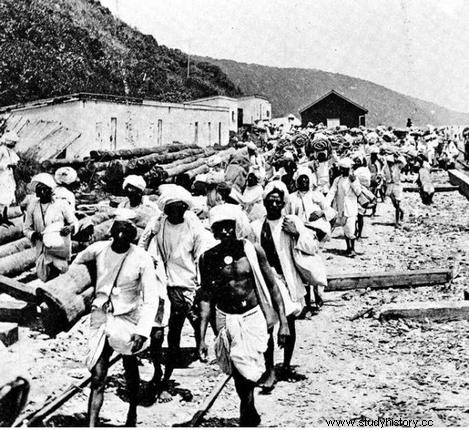
The British Empire established labor as a patch for the abolition of slavery. However, the conditions for labor in the insecure were poor. Upon arrival, the authorities sent the workers who were handed over to sugar cane plantations throughout the province. The South African colony farmers were looking for strong, healthy men who would work tirelessly to transform virgin, subtropical soil into productive, arable land. Therefore, employers sent sick, disabled and elderly people back to India as they were unfit for manual labor.
The plantations lacked barracks and suitable accommodation, so the workers constructed make-shift cabins. Furthermore, South Africa's basic carbohydrate, maize flour, was poorly suited to Indian preferences for rice and flatbread ('roti'). The persistent lack of sanitation and appropriate living conditions led to further illness, disease and death among the workers who had contracts. According to the contract, the period lasted a maximum of five years. The daily work of a worker who was in working life included planting, fertilizing, weeding, caring for the crops, harvesting, loading, transporting, milling, packing and leveling roads, as well as building dams and houses.
The suicide rate and escape attempts among the workers who were in the workplace were significant due to the low wages, long working hours, laid-back physical tasks and inhospitable living conditions. The existing population of South Africa regarded the displaced Indian workers as an undesirable presence in Natal. Written reports of racial oppression, physical abuse, and prejudice by white employers abound.
Mahatma Gandhi and The Indian Congress
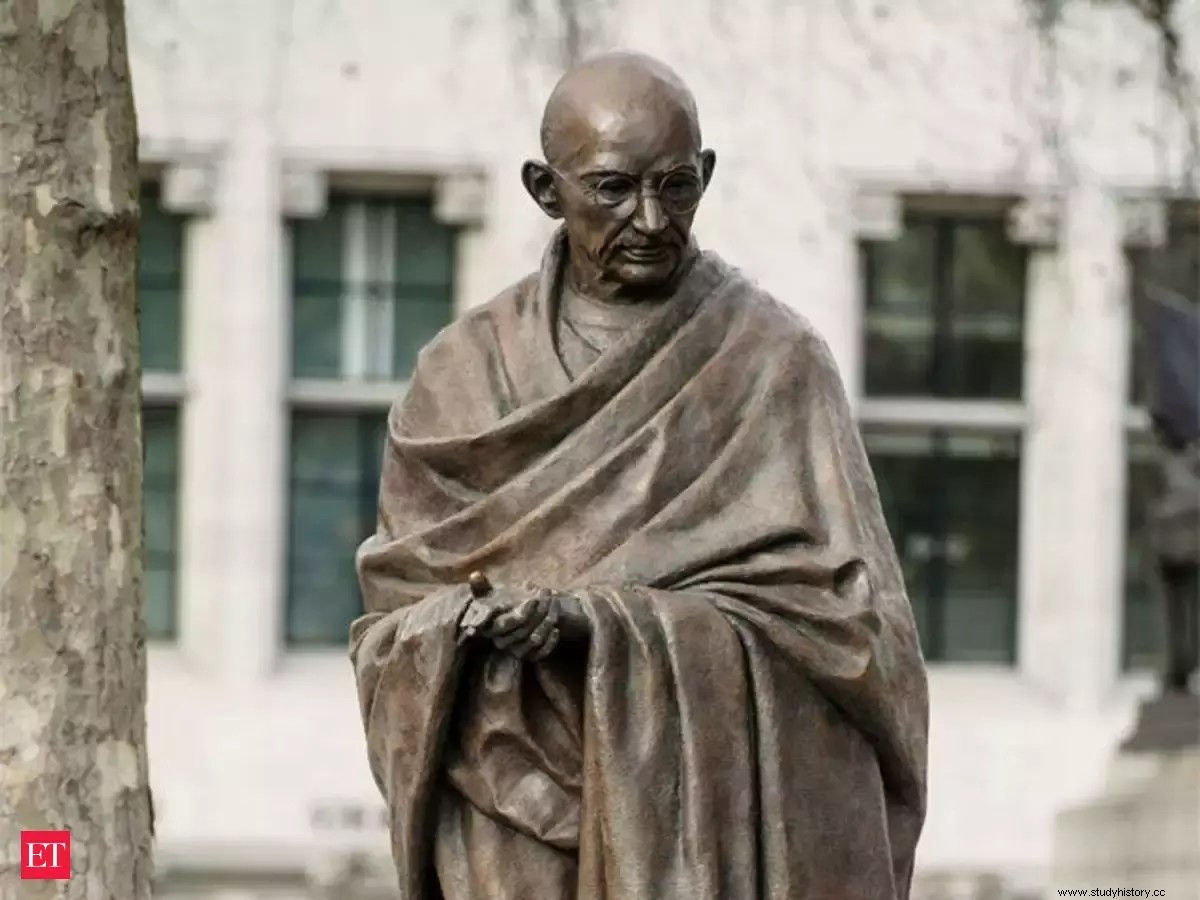
Mahatma Gandhi, an Indian lawyer and human rights activist, sympathized with the situation of Indian workers after a racist attack on a South African railway station. In 1893, Gandhi visited Natal to work as a lawyer under a one-year contract. However, Gandhi's concern for the oppressed workers in the oppression extended their stay. Natal authorities plan to disconnect the Indian population in Natal, a gross violation of workers' human rights.
In 1894, Gandhi formed the first Indian Congress, the National Indian Congress (NIC), which fought against the oppression and racism experienced by the South Indian Indians. Mahatma Gandhi promoted his philosophy of passive resistance (' Satyagraha ') and his methods of non-violent struggle against the burgeoning Indian community in Natal. Today, Indian communities boast various landmarks, buildings and local events throughout Natal to commemorate Gandhi's life and teachings.
Abolition of introduced labor
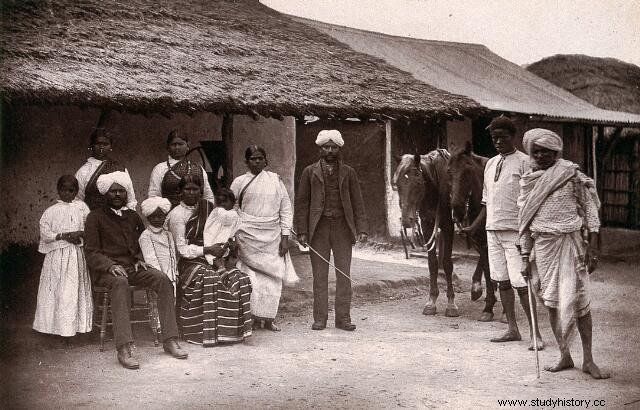
As the contracts expired, colonial peasants offered the identified workers two options:a return trip to India or a plot of land on South African soil. The Indian workers who returned to India returned to an unrecognizable homeland. Indian locals stigmatized the returning workers for crossing the sea and interacting with 'immovable' (lower castes) during their stay. With the perilous poverty and the global recession, the returning workers still faced the same challenges, and the trip to South Africa seemed weak. However, the returning workers informed the Indian authorities about the situation of the workers in Port Natal.
Therefore, in 1911, India banned labor in commitments to Natal, and in 1917, the British government abolished labor that had not been displaced. After the abolition of labor, the migration of ' passengers 'Indians to South Africa consisted of merchants who traveled as British citizens. These passenger Indians settled in the Transvaal, Natal and Orange Free State areas. The expulsion of small white-owned enterprises by Indian passengers increased the growing racial tensions in the country.
Repatriation and the riots in Durban
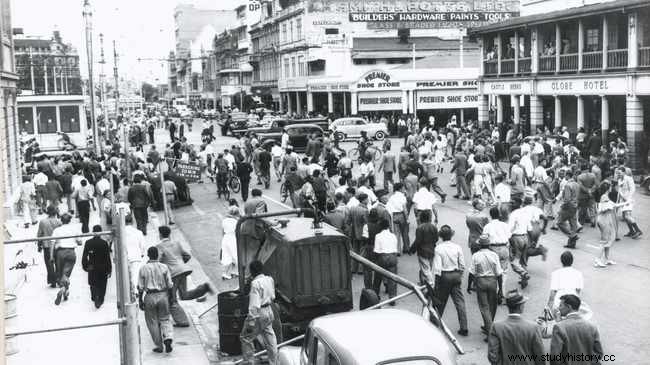
The workers who chose to stay in South Africa multiplied the Indian population in Natal. The increase in non-white citizens threatened the power of the white government. Therefore, South African authorities pressured Indian South Africans to repatriate with economic incentives, a £ 3 poll and discriminatory treatment. In December 1926 and January 1927, the South African government and the Indian authorities attended two roundtables to discuss the growing Indian population in Natal. India agreed to launch a repatriation initiative for South African Indians. For its part, the South African government agreed to work for the upliftment of the remaining Indian population in South Africa. However, very few Indian South Africans decided to repatriate, and racial tensions in South Africa continued to simmer into the 1940s.
Prejudice and xenophobia against the new settlers rose among the indigenous Zulu people of Natal. In January 1949, Natal's locals in Zulu held violent protests against the Indian people. 'Durban Riots' resulted in the deaths of 142 people and 1087 injured citizens. The growing population of non-white citizens led to national enforcement of the apartheid regime.
Apartheid regime and racial oppression

In the late 1940s, the South African government enforced the apartheid regime, a system of institutionalized racial segregation. The growing non-white population was outnumbered by the white population and threatened white rule. Therefore, the white government feared a coalition among non-white citizens.
Apartheid legislation separated and restricted South African citizens according to their racial classifications to prevent interracial interaction. In 1950, the Population Registration Act No. 30 dictated that all South African citizens were identified and registered as one of the four different racial groups:White, Colored, Bantu (black African) and Other. Under apartheid, the government classified Indian South Africans as 'colored' (non-white).
Pursuant to the Population Registration Act No. 30, South Africa implemented the Group Area Act the same year. The Group Areas Act restricted South African citizens to areas designated for their classified racial group. The state removed Indian South Africans from their homes across Natal and moved the Indian population 20-30 kilometers away to official Native American townships ('Coolie' places).
Over the years, the South African government has rolled out a lot of legislation to restrict the movement, employment, education and rights of the non-white population. The apartheid regime banned Indian South Africans, in particular, from living and working in the mining industry, which dominated the Orange Free State and Transvaal (White-Only Areas) areas. Furthermore, non-white South Africans were denied the right to vote, own land and run informal businesses.
In cities and towns demarcated obvious public signage sidewalks and public toilets assigned to non-white individuals. The apartheid regime forced non-white citizens to wear a 'dompas' and follow a curfew of 9. In addition, the state gave non-white individuals a poorer education compared to white South Africans. The abandoned Salisbury Islands prison served as a university for Indian South Africans during apartheid.
The struggle for democracy and racial equality
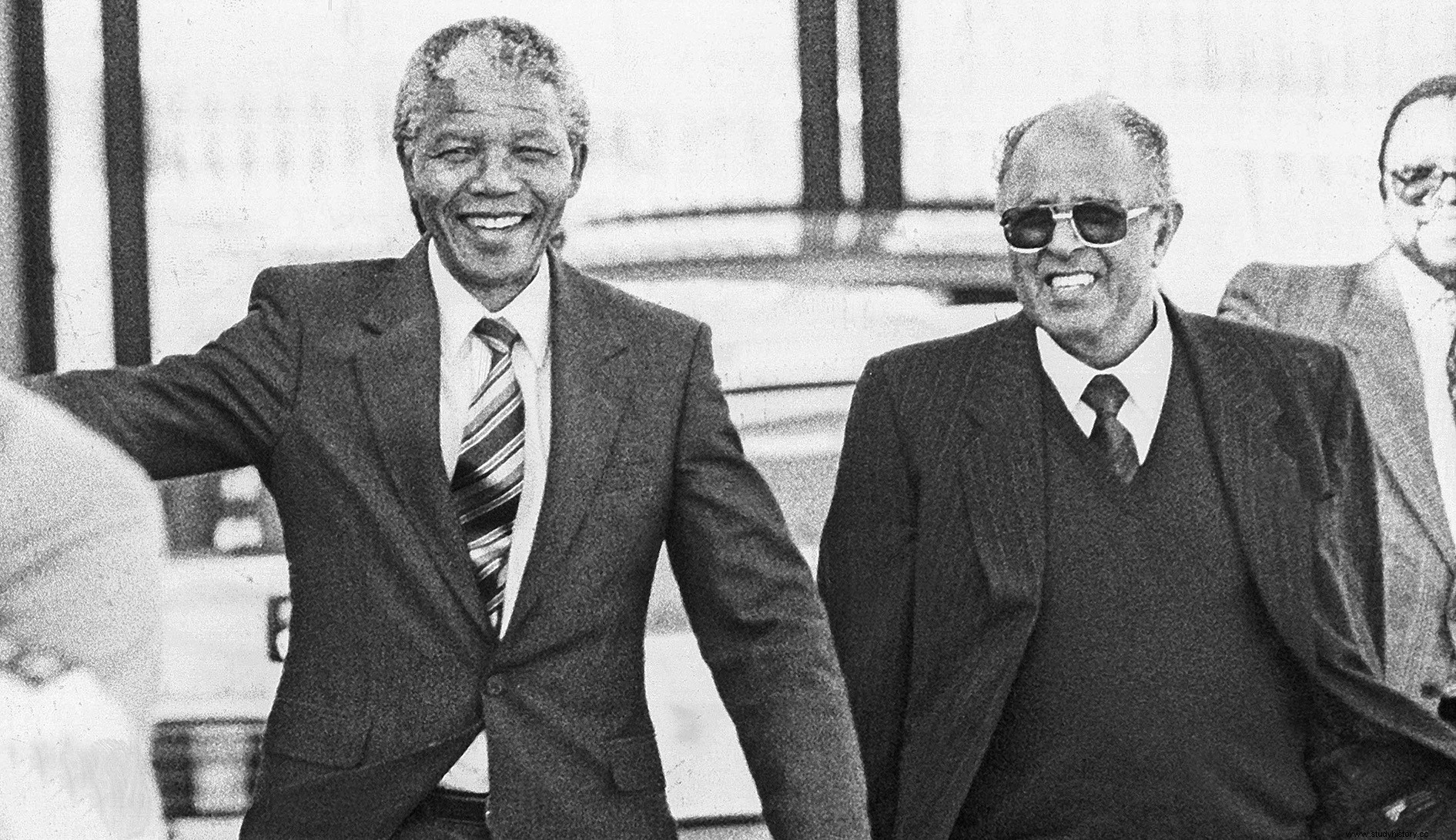
In 1961, the first incidents of rebellion against the apartheid regime began to take root, and Indian South Africans were recognized as a permanent part of the South African population. For its part, an institute for Indian affairs was established, headed by a white minister. The South African government formed the South African Indian Council (1968) to mediate between the Indian people and the South African government. Subsequently, constitutional reforms in 1983 gave Indian and colored individuals limited participation in separate and subordinate houses of parliament.
The Indian Parliament House was named House of Delegates, led by Amichand Rajbansi. Parliamentary powers and chose to raise the Indian population once again for fear of coalition among the non-whites. The white government certainly gave the Indian and colored people more power to formulate superiority and hostility among the non-white citizens. The scars from this injustice are visible in today's cases of racism between Indian, colored and black citizens.
The long, hard struggle for equality in South Africa is full of determined, passionate Indian freedom fighters. Indian politicians, such as Ahmed Kathrada and Dr Yusuf Mohamed Dadoo, took their place along with renounced human rights activists such as Nelson Mandela and Chris Hani. South African authorities imprisoned many Indian activists in Old Fort, Durban Central, Ixopo Prison and Robben Island during the struggle for freedom. The struggle for racial equality finally ended in 1994, when the first democratic elections took place.
South African Indians today
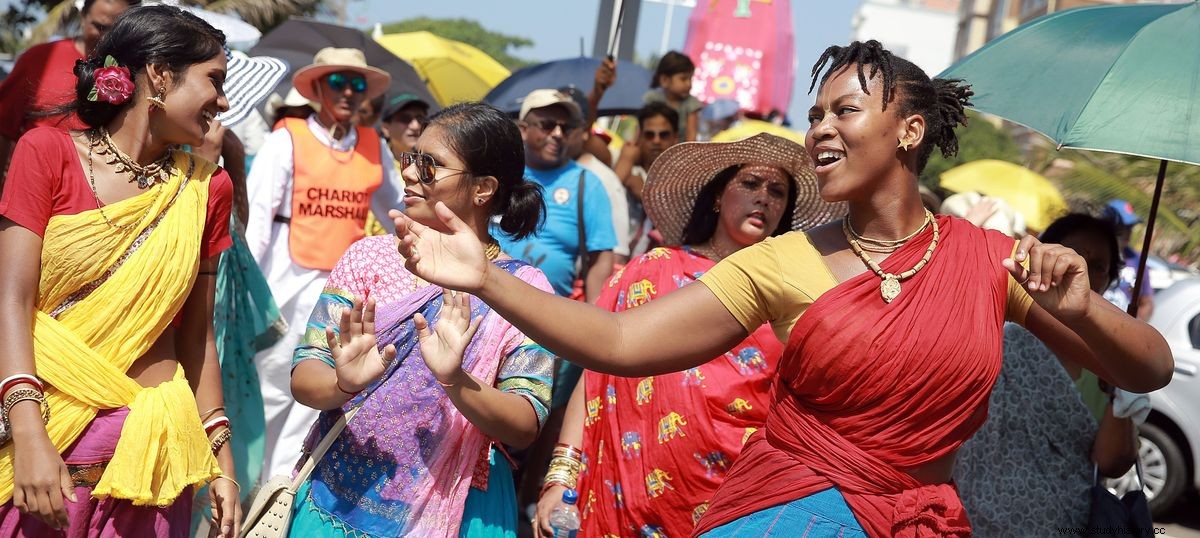
The end of labor, racial oppression and apartheid has given Indo-South African society the freedom to grow and prosper. KwaZulu Natal, formerly Port Natal, has the highest concentration of Indians outside India, and South Africa supports the largest population of Indians in sub-Saharan Africa. Today, the warm eastern coast, which welcomed human cargo, has developed into one of the largest ports in Africa. South Africa's Indian population is concentrated in the heart of KwaZulu Natal, Durban City.
Language and religion
Today, Indian South Africans have different jobs, and the standard of living among the Indian population is diverse. Modern Indo-South Africans speak English as their mother tongue. However, a limited proportion of the elderly community still speak Native American languages (Hindi, Tamil, Telegu, Urdu, Punjabi and Gujarathi). The KwaZulu Natal Provincial Government has included the indigenous Eastern languages as a third language alternative in local schools.
Hinduism is still the dominant religion among the South African Indian population. However, studies show a decline in Hindu devotees. Many Indo-South Africans convert to Christianity through the influence of missionaries and outreach programs. Western clothing is most prominent in Indian society. However, traditional dress is adorned for sacred festivities and special occasions.
Food and Entertainment
The culinary landscape of South Africa has been filled with the spicy, filling flavors of Indian cuisine. The unique spice blend used in Indian curries is not found anywhere else in the world. Popular Indian-inspired dishes include 'bunny chow', an indigenous people in Durban, consisting of a halved and hollowed out bread stuffed with curry.
South African broadcasting and entertainment media have adopted Indian media to promote inclusion and diversity. The satellite TV service, DSTV, broadcasts Indian channels like Zee TV, B4U, NDTV. Furthermore, DSTV introduced channels in Tamil medium, such as Sun TV and KTV, in 2004. Local Indian news services, such as Indian Spice, focus on current events and topics relevant to Indian society. Community radio stations, such as Hindivani and Lotus FM, provide a daily dose of Bollywood music. Cinema chains, such as Ster Kinekor and Nu Metro, have shown national inclusion by showing Bollywood films since the 2000s. Other examples of national inclusion include Bollywood supplements published by the Sunday Tribune, the Herald and the Daily News.
Conclusion:Cultural significance in anthropology

Through all the faces of South Africa's colonial rule, oppression and segregation, the Indian presence has endured and triumphed. Indian influence is woven into all aspects of South Africa's rich, vibrant cultural landscape. However, South Africa's diverse societies have in many ways removed the original customs and traditions of Indian society. The variety of Western, African and Asian influences has forged a South African Indian culture that is unique and indigenous. The caste, colonial rule, and widespread poverty are no longer insurmountable obstacles for the modern generation of Indians in South Africa. It is comforting to know that the journeys of the workers who were at work, all these years ago, were not in vain.
